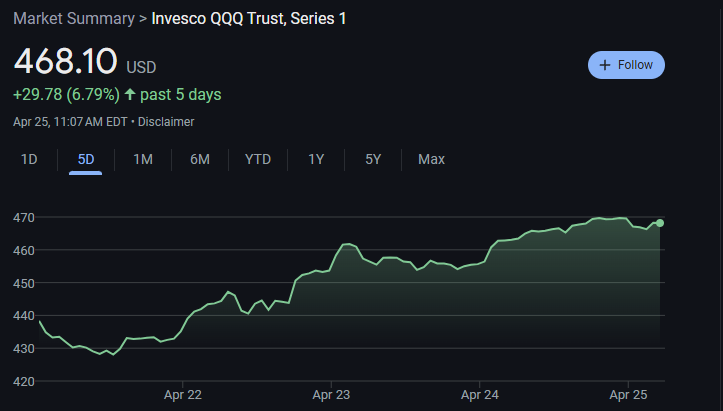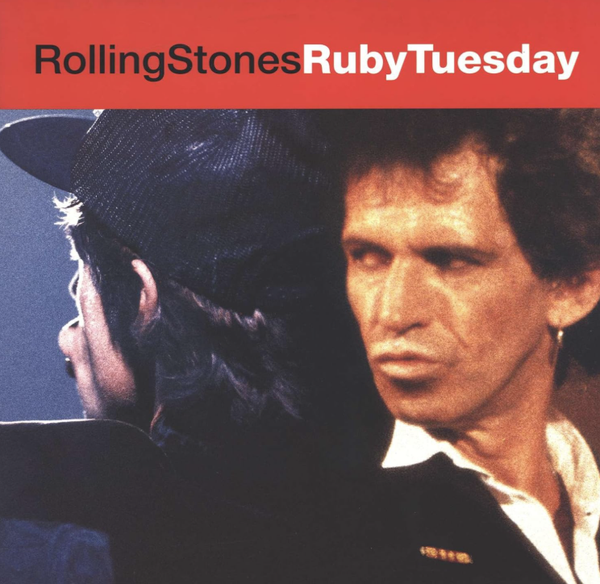Trade Alert: Two new platform buys and a closed pair trade
Happy July 4th to you and yours. Hope and trust you’ll all be safe celebrating America’s 236th birthday, especially those of you setting of fireworks in the super-dry west. As we celebrate our revolution here is the U.S. of A there’s a non-revolution brewing in the non-United-States-of-a-Zone-in-Europe. Last week Germany decided to make ‘concessions‘ which investors ‘cheered‘. Or, as it looks to me, Germany did what it was going to do all along and investors did what they always do, they invested. Which is to say, I don’t care. Here’s what I wrote on TradingWithCody.com back in September of last year:
I sure don’t think that Greece and Euro falling apart would be bad for the economy at all. Indeed, as I wrote the last time we were supposed to panic over Greece in Let the Euro die and the bull market resume – “Did you know that the DJIA was up 20% per year for the five years heading into the initiation of the Euro? The markets gave more than 10% annualized returns for the decade before the Euro started. And in the decade since, the markets have been roiled and rangebound. In the first five years after the Euro started, the markets went straight DOWN. Not up.”
Just look at what the S&P has done since then, a huge 18% bounce:
And my article in the above quote from last June? The market is up about 7% from then too. You want to be buyer when the chicken littles are running central banks and cable news networks, and a seller when they start telling you to take out a second mortgage to buy a second rental property in Majorca.
Quick note on Facebook FB and Lindsay LNN, many of you, especially the options traders who have seen enormous gains in just two weeks, have been emailing and asking if I’m still holding on. Short answer, yes, I am, we got lucky and I’m holding fast for now. Let’s get to the changes in our Revolution Portfolio, there are some big ones. We’re upping the stakes on the Revolution Investing mantra and buying two Revolutionary platforms today.
But first I’m closing out the Seagate STX . (Of if you’re interested in coming to the TradingWithCody Summit, where I’ll be charging the general public $1000 a head, but TradingWithCody subscribers can come for half price at $500, we can pat each other’s backs and then immediately get back to work discussing trading strategy. Let me know your interest in a NYC or a Ruidoso, NM TradingWithCody Summit by emailing us at support@tradingwithcody.com.)
Trimming winners and redeploying cash is a skill that retail investors seriously neglect (Also: letting huge winners run can you get at an amazing cost basis. See: Apple AAPL). Seagate is partciularly well managed but this was a mid-term bet from the start and it’s time to take our profits on both the STX long and the WDC short — you dream about making money on both ends of a paired trade, and we did. I suggested selling most of the STX calls at higher levels, and we’re still up on the remainder common stock.
The two names we’re adding as part of our shift to platform investing are Baidu BIDU and Amazon AMZN. Let’s tackle Baidu, the Chinese Google GOOG, first.
Investors are terrified of investing in China right now, and rightly so. The Bo Xilai affair isn’t only salacious, it points to large scale, endemic corruption, and a system built around enriching the powerful civil servants. Sino-Forest tricked two different billionaires (John Paulson and Richard Chandler) and plenty of regular investors into accepting their results as real. Which is exactly why it’s time to get long Chinese platforms that will expose frauds and empower the increasingly rich citizenry. Think about the next 10 years and the trajectory of a today’s Chinese student. Just like kids everywhere, they are totally app/cloud/mobile literate, but they’re being told not to share their deepest hopes and fears and ambitions. How long do you think that will hold? If you have kids, do they listen when you tell them to get off Facebook FB? The social media revolution is just getting underway in China, and is starting to spread beyond urbane luminaries like Ai Wei Wei. Buying Baidu means you are investing in a privately owned solution that will ultimately subsume the state and enable its users to chart their own destiny. As many roadblocks and firewalls as the central planners in Beijing put up, there will be 10x that number taking them down. And much of that Revolutionary work will be done on Baidu’s search engines, meaning you should own a piece of that growth. The Chinese communists will have no choice but to bend to the will of Baidu’s user base, its Too Big To Shutdown and doing so would actually crimp GDP. With a market cap of 39B and trading at around 15x sales Baidu might not look cheap but when you consider it has $2.5 billion in the bank and is growing sales 75% year-over-year the story starts to come into focus. After pushing my research team to actually call their friends in China I’m convinced that Baidu will outpace Google in the medium term and will keep up those blistering margins and growth rates in the long term.
Now to Amazon. There’s lots I could highlight, how Amazon is disrupting the entire publishing value chain, that they have a seat in your living room by offering free streaming content to Prime subscribers or how they’re becoming the de facto online shopping jumpoff. But what I really care about is Amazon As Platform (or AAP). My vision of what Amazon is trying to do is simple: they are trying to be the platform for all things e-commerce. Think of Amazon as an operating system and every brand or individual selling through Amazon as an app. In ten years I see companies with significant catalog businesses, like say, a Williams-Sonoma WSM, shifting their fulfillment to Amazon. So WSM would still get the bulk of revenue but they will do the bulk of their business through a curated sellers page on Amazon. Selling on the Amazon would undoubtedly bring in more revenue, the question is when retailers accept that they need to be on Bezos’s platform, and how long they’ll cry cannibalization. The scale of the fulfillment and platform business makes enormous sense for Amazon; WSM for example has about $3 billion in revenue, and capturing 10% of that for platform services might look small but multiply that by about 50 other companies of similar size and you add about 10% to Amazon’s current revenue picture.
And I love, love, LOVE Amazon’s push into product subscriptions. If you haven’t used it already pick a product that you buy with regularity, like toilet paper (sorry for that one Mom). Buy in bulk and Amazon matches the absolute lowest-cost vendor out there, Wal-Mart WMT on the price for Charmin Ultra Soft, Double Rolls, 4 count packs, ($3.36). And if you consider the scale of Wal-Mart’s retail network and realize that’s what it takes for Wal-Mart to sell toilet paper that cheaply and take 1% cut, you’ll start to appreciate just how revolutionary Amazon’s platform is. Sure, you’ll always need to run to the store and pick up a couple basic items, but consumers, over time, will shift their basic purchases online, not just discretionary ones. And if you plan, and try to save money, and seriously, who isn’t trying to do that right now, you can buy your toilet paper through Amazon’s subscription service, delivered free to your door, for 5% under Wal-Mart’s price. Right now ecommerce is less than 9% of total retail sales, or about $160 billion. And right now retail sales are often talked about in terms of ‘ex-Wal-Mart’ because the Bentonville giant is fully 11% of all retail in America. Over the next decade, not only will the overall retail pie grow, but the ecommerce portion will tip to over 20% and Amazon will have an enormous piece of that. You want to be long Amazon before analysts start talking about the retail economy in of ‘ex-Amazon’ terms.
Amazon as an agnostic fulfillment platform terrifies Google. If consumers come to see Amazon as the lowest cost option, they’ll stop searching on Google to buy stuff and that would be an enormous hit to AdWord revenues. Which is why Google is trying to assemble a Prime-like shipping service of their own, and is desperate to sign up retailers like Macy’s M and OfficeMax OMX. Amazon is building their video offerings to be a genuine competitor to the ‘dumb’ cable and satellite networks. By allowing their Instant Video service to stream on set-top boxes like Roku, Amazon is piggybacking on an existing user base and wifi networks to win living room and mobile ‘shelf space’. The last 50 years of how consumers interact with TV won’t be how they do it in the next 50, and Amazon is making their video platform ready for a huge upcoming slate of social media video apps, like Shelby. So without the massive capital investments that cable companies have to make to just stay in business, Amazon is creating a rival platform that can aggregate and sort video and deliver it to your living room or your smartphone. I predict that within the next two years they start working with a TV manufacturer and create an Amazon TV that will seamlessly stream content without a cable subscription. And five years from now Amazon will probably be a top 5 smartphone vendor. Amazon is using Google’s Android right now to power their Kindle fire but they have such an enormous and dedicated user base that I see the Kindle becoming a platform in it’s own right, not just another generic Android device. Buying Amazon before their revenue mix includes data plans and retransmission fees and all sorts of stuff that traditional distribution networks own right now is a revolutionary bet.
I’m starting with a first tranche buy of common stock in BIDU and AMZN.
And before I go, here’s a patriotic new music video from my band, the Muddy Souls, built upon a platform from Queen’s “Under Pressure”:
Happy 4th of July everybody.




